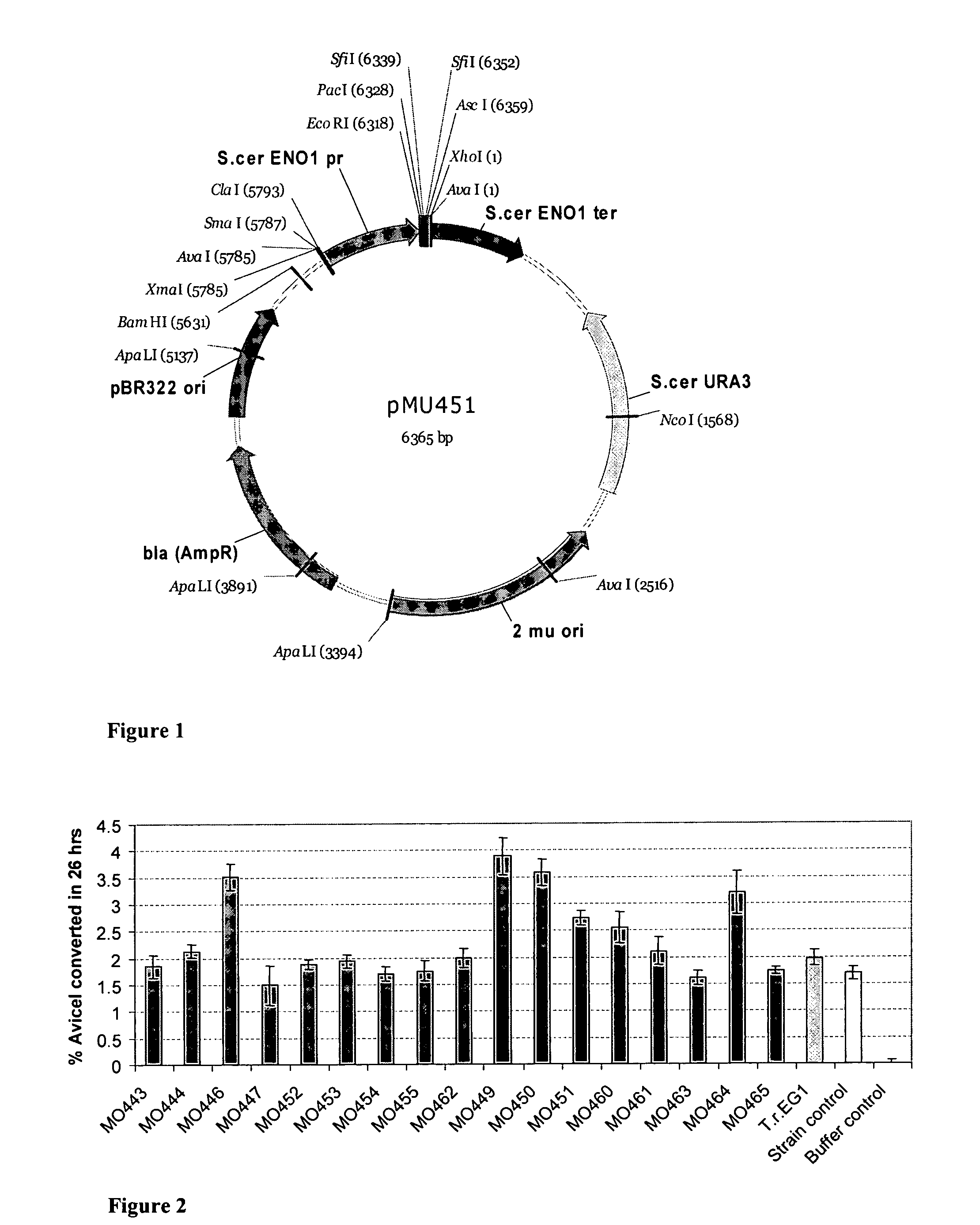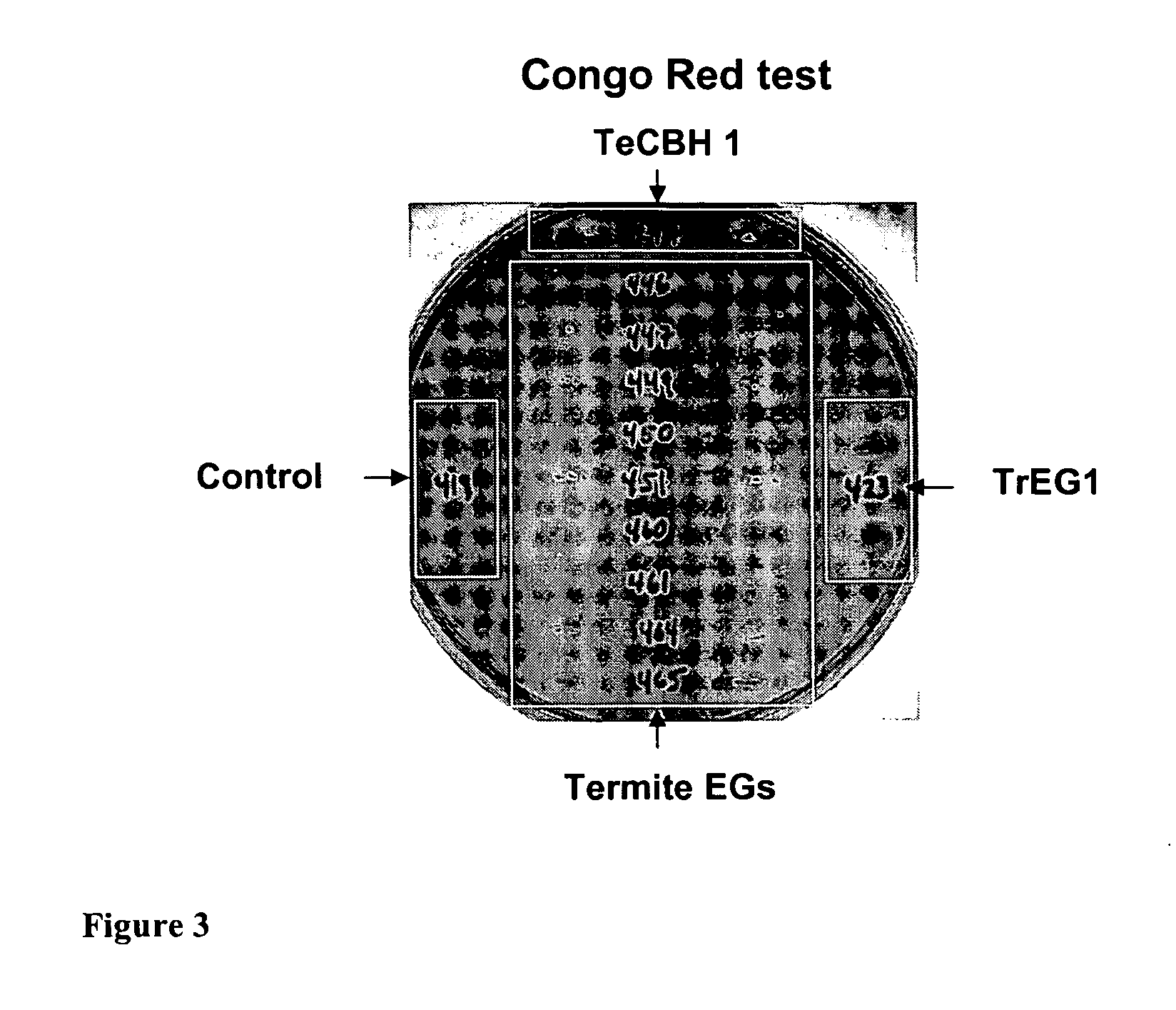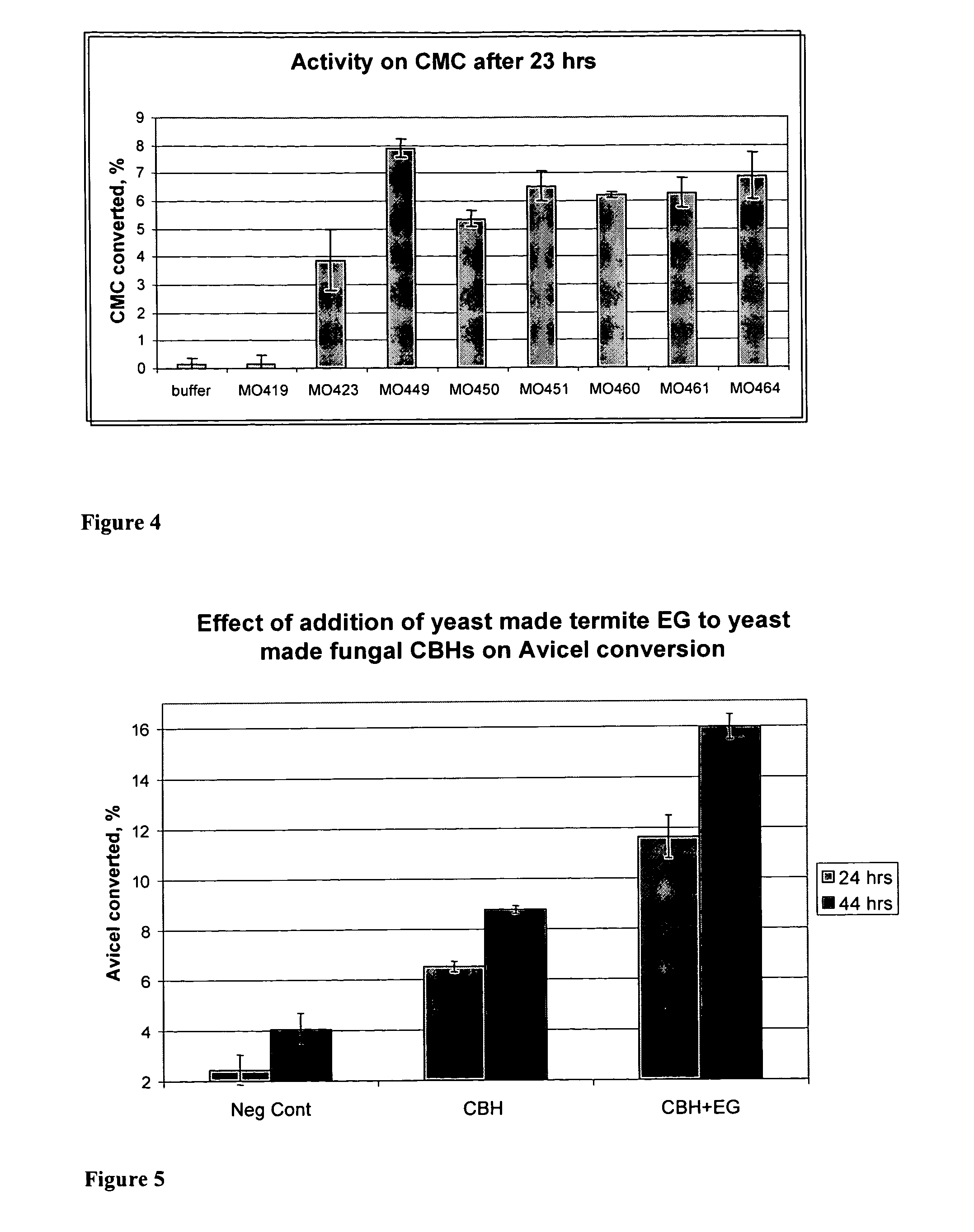Heterologous Expression of Termite Cellulases Yeast
a technology of termite cellulase and heterologous expression, which is applied in the field of heterologous expression of termite cellulase yeast, can solve the problems of low-cost technology for overcoming the recalcitrance of these materials and historically proven to be problemati
- Summary
- Abstract
- Description
- Claims
- Application Information
AI Technical Summary
Benefits of technology
Problems solved by technology
Method used
Image
Examples
example 1
Cloning of Codon-Optimized Termite Cellulase Genes and their Expression in Saccharomyces cerevisiae
[0219]Cellulase genes from various termite sources (as indicated in Table 5 below) were codon-optimized for expression in the yeast Saccharomyces cerevisiae and K. lactis.
TABLE 5Termite and Termite-Associated Cellulase Symbiont Cellulase Constructs and StrainsYeastExpressionstrainconstructFamilyOrganismNCBI refActivityM0443pMU456ProtozoaHolomastigotoides mirabileAB071011endoM0444pMU457ProtozoaReticulitermes speratus symbiontAB274534endoM0446pMU465ProtozoaCoptotermes lacteus symbiontAB089801endoM0447pMU466ProtozoaReticulitermes speratus symbiontAB045179endoM0449pMU471MetazoaCoptotermes formosanusAB058671endoM0450pMU472MetazoaNasutitermes takasagoensisAB013272endoM0451pMU473MetazoaCoptotermes acinaciformisAF336120endoM0452pMU490ProtozoaCryptocercus punctulatus symbiontAB274702endoM0453pMU491ProtozoaMastotermes darwiniensis symbiontAB274656endoM0454pMU492ProtozoaPseudotrichonympha grassi...
example 2
Avicel Conversion Assay
[0223]An Avicel conversion assay was used to determine the activity of S. cerevisiae containing termite cellulases and termite-associated symbiotic protist cellulases. In these experiments, the strains to be tested were inoculated in 600 μl of YPD in a deep 96-well plate and grown with shaking at 30° C. for three days. Then, cells were spun at maximum speed for 10 minutes. Avicel substrate mix (300 μl) was added to wells of a new deep 96-well plate, and shaking was repeated throughout addition to prevent Avicel from settling. Then 300 μl of yeast supernatant (or buffer for negative control) was added to the wells containing the Avicel substrate. The yeast supernatant and substrate were mixed by pipetting and then 100 μl was transferred to a 96-well PCR plate for a sample at T=0. The deep 96-well plate containing yeast supernatant and substrate was incubated at 35° C. with shaking at 800 rpm. The 96-well PCR plate containing the T=0 samples was spun at 2000 rpm...
example 3
Carboxymethyl-Cellulose Conversion Assay
[0225]A Congo Red carboxymethyl-cellulose (CMC) assay was used to test the activity of S. cerevisiae containing termite cellulase or termite-associated symbiotic protist genes. In these experiments, yeast colonies were patched on yeast nitrogen base (YNB) plates with CMC. (Plates were made by mixing 0.5 g CMC, 10 g Agar, 10 g glucose and water to 450 mls, autoclaving the mixture, and then adding 50 mls YNB with amino acids.) Plates were grown for two days at 30° C. and then washed with 1 M tris pH 7.5. Colonies were then stained for 20 minutes in Congo Red (0.1% in H2O) and washed several times with 1 M NaCl. The photograph of FIG. 4 was taken shortly after destaining to avoid increases in background over timer. Strain MO423, containing T. reesei EG1 was used as a positive control, and MO247, a strain expressing T. emersonii CBH1 in a vector similar to pMU451 with furl gene knocked-out to make the episomal plasmid stable, was used as a referen...
PUM
| Property | Measurement | Unit |
|---|---|---|
| temperature | aaaaa | aaaaa |
| temperature | aaaaa | aaaaa |
| temperature | aaaaa | aaaaa |
Abstract
Description
Claims
Application Information
 Login to View More
Login to View More - R&D
- Intellectual Property
- Life Sciences
- Materials
- Tech Scout
- Unparalleled Data Quality
- Higher Quality Content
- 60% Fewer Hallucinations
Browse by: Latest US Patents, China's latest patents, Technical Efficacy Thesaurus, Application Domain, Technology Topic, Popular Technical Reports.
© 2025 PatSnap. All rights reserved.Legal|Privacy policy|Modern Slavery Act Transparency Statement|Sitemap|About US| Contact US: help@patsnap.com



